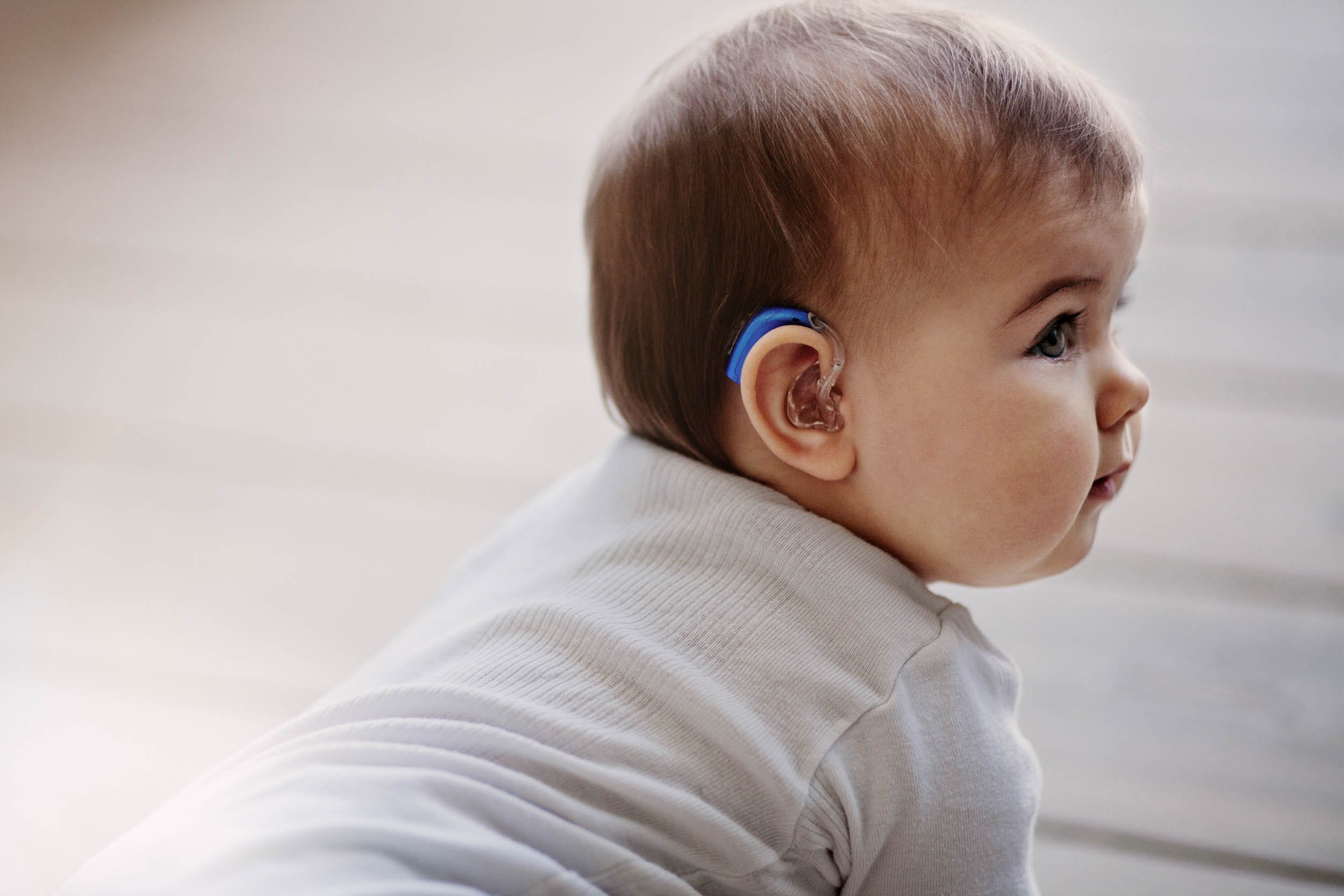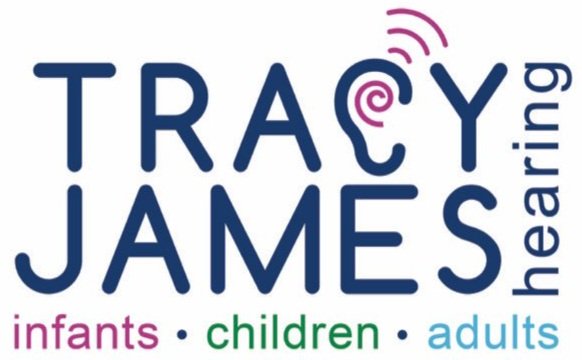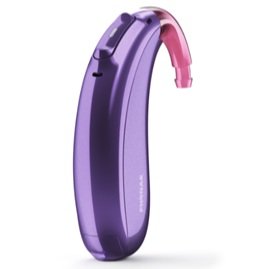
Children’s Hearing Aids
Unfortunately we are currently unable to offer children’s hearing appointments (under 4 years of age) and auditory processing appointments for children. This is due to losing our accommodation hire for the paediatric audiology suite. We are looking for an alternative venue and we will announce here when this will be available. We are very sorry for the inconvenience caused and we thank you for your patience and understanding whilst we find a suitable location. Please check back for updates or email admin@tjaudiology.com for enquiries from existing paediatric clients, older children - and/or to be added to our waiting list.
Hearing aids are worn mostly for children with diagnosed permanent hearing losses, whether at birth or as an older child. However, hearing aids can also be very helpful for children with temporary hearing loss due to glue ear, where grommet surgery is not suitable or where a non-surgical option is preferred.
The most common types of hearing aid worn by children are behind-the-ear (BTE) hearing aids (also known as post-aural aids). They can be fitted to people of all ages and are suitable for very young babies upwards. If your child loves colourful styles and patterns on their hearing aids – they are available; earmoulds can also be marbled, contain glitter or logos or their favourite movie character or football club.
If your child wants something more discrete (something we find more often with teenagers) – then a receiver in the canal, in-the-ear hearing aid (custom made) or a ‘wearable device’ may be more appealing (see below). At TJH we have lots of experience in fitting in-the-ear (custom) hearing aids for children, teenagers and young adults.
Roger remote hearing system
Children may also need access to a remote hearing system, FM or Bluetooth system – so that they can hear the teacher (or parent) at a distance, in group scenarios and in a noisy classroom. These systems are also available privately and we would ensure your hearing aids were compatible with these systems as part of the fitting process.
Most hearing aids can work with Bluetooth for direct streaming of electronic devices (including phone calls) and can be operated with an app from mobile phones. This function can be activated on or off, as can buttons and other controls on the devices – depending on the needs and abilities of your child. Waterproof hearing aids are also available at TJH.
Hearing aids cost between £1400 and £2500 per device. For children, there will also be costs associated with ongoing hearing assessments as required and we recommend that you consider using your NHS service first for hearing aids before going private. If you do decide to go ahead - the best-case scenario is when we can work in conjunction with the NHS and/or you keep the NHS hearing aids as a back-up or spare as necessary. TJH will work with Audiology / ENT and other associated professionals as required, providing reports and referrals as necessary.
Different Types of Hearing Aids
See below for more information about the different types of hearing aids available.
Receiver in the ear (RITE) hearing aids
These are Receiver In The Ear (RITE) hearing aids and can be used from around the age of 7 years old. The advantages of these hearing aids are that they are smaller, lighter and more discrete than BTE hearing aids. They also have a very good natural sound as the ear is not fully occluded – some louder, natural sounds are able to enter the ear without amplification. Because the Receiver (or part of the hearing aid that provides the sound) sits in the ear canal - there can be greater amplification and less feedback than BTE hearing aids, and they can be suitable up to severe hearing losses. A consideration is that the Receiver sits inside the canal; more regular cleaning and maintenance is required to prevent damage from wax and debris. Because the hearing aid is lighter, a child may benefit from a custom tip that sits inside the ear canal to keep it in place. Rechargeable and Bluetooth available.
Behind the ear (BTE)
A behind the ear (BTE) hearing aid with an earmould is useful for growing ears and for those with hearing loss up to profound level. An advantage of this type of hearing aid is that it is very robust and less prone to feedback for severe and profound hearing losses. It also stays in the ear very well. A consideration is that BTEs do not always fit unusually shaped ears and can be difficult to fit when wearing hats or glasses. Earmoulds have to be re-made as the ear grows, to ensure a good acoustic fit. Rechargeable and Bluetooth available.
Bone Conduction hearing aids (BC or BAHA)
Some children with conductive or mixed hearing losses may wear Bone Conduction hearing aids (BC or BAHA) - available in soft or hard bands. They work by conducting the sound via the skull straight to the nerve of hearing, rather than moving through the outer and middle ear (they bypass any outer or middle ear abnormalities).
BC aids are useful when conventional hearing aids cannot be worn, are not tolerated or are not beneficial. Children with glue ear or fluctuating losses can also find BC aids useful, as it can provide more consistent amplification. BC hearing aids can be fitted for one or both ears and can also be fitted to glasses. Rechargeable and Bluetooth available.
Ready to wear invisible hearing aids
These ready to wear invisible hearing aids are suitable for mild to moderate losses. They are great because they don’t require any re-shelling (a consideration if you have growing ears!) and no impressions are required. They come with domes that clip on the end of the hearing aid that is fitted for the size of the ear. Suitable for teenagers and adults with a mild to moderate hearing loss who would like an invisible hearing aid. Rechargeable and Bluetooth available.
Custom-made devices
Some children may reject behind-the-ear hearing aids when they become teenagers, and sometimes younger; particularly those with a mild or moderate loss. The benefits of CIC or ITEs are that they are very discrete and are sometimes invisible to other people. As they are enclosed within the ear canal, they need a regular maintenance routine to prevent from wax and debris entering the hearing aid. A consideration is that the hearing aids need to be re-shelled if the ear changes size or shape. Minimum age for CIC/ITEs is 9 years. Rechargeable and Bluetooth available.
Wearables
Wearables are designed to look like wireless headphones. They're particularly good as they don’t require any re-shelling (a consideration for children and young people who have growing ears!) and no impressions are required. They have Bluetooth technology allowing you to stream audio from various devices. Suitable for teenagers and young adults with a mild to moderate hearing loss. Rechargeable and Bluetooth available.
Frequently Asked Questions
Hearing aid styles at Tracy James Hearing are chosen first and foremost on the level of amplification required, type of hearing loss and the size or shape of the ear. Our aim is that the hearing aid(s) provide optimum audibility and comfort, and that you’re happy with how the hearing aid looks in your ear.
Factors that influence choice include:
Size – children’s ears need to be able to hold the device securely
Rechargeable options are good for some children, so that the battery doesn’t fail during the school day
Health of your ears – some styles may be more suitable there are skin conditions related to your child’s ears, or if they are prone to ear infections or glue ear
Compatibility with mobile phones and electronic devices (streaming to the hearing aid via Bluetooth, with multiple pairings) – this may be important for school
Other factors that influence choice for children include:
Robustness of the aid (e.g. waterproofing)
Compatibility with other devices, e.g. FM systems, telecoil
Colours and patterns that are available
Tamperproof battery drawers
Visible indicators (e.g. lights to show when the hearing aid is switched on)
Paediatric hooks for the ear
Approval by the national paediatric hearing aid quality group (British Academy of Audiology)
All hearing aids are verified using real ear measurements, as recommended by the British Society of Audiology (BSA). This procedure ensures that the hearing aid prescription is being reached in the ear, by measuring the output of the hearing aid using a probe microphone and a speaker.
As everyone’s ear is different, sound behaves differently when it enters the ear. A real ear measurement allows the audiologist to fine tune the gain of the hearing aid so that it amplifies appropriately. Think of it as buying a tailor-made suit rather than a suit off the shelf! In children there is even greater variation in ear size, and as they grow – making this measurement even more important.
Speech and aided listening checks can be used in clinic to evaluate the hearing aid effectiveness, along with a detailed evaluation by the audiologist.
-
All hearing aids at Tracy James hearing have directional microphones (important for listening in noise), noise reduction (important for general listening comfort) and wireless capability (for listening to devices remotely, e.g. mobile phones, clip on microphones). Some hearing aids have the ability to move or compress non-audible sounds or speech (according to the measured hearing loss) to an area in the ear that is audible (known as frequency compression). Some hearing aids have wider bandwidths than others which means that a greater spectrum of sound may be available to the listener. All hearing aids have different programme options, technology and volume control settings, which can be turned on and off as required when carrying out the fitting.
Some children may benefit from using a manufacturer that they’ve used before, particularly if they’ve worn those hearing aids since birth. We can often use the same manufacturer as the NHS, with a few extra bells and whistles and style choices as required. The most common hearing aid used for children in the NHS is Phonak, largely because of their connectivity with the Roger Pen (remote microphone) – which helps hearing in a busy classroom environment.
Nevertheless, we are an independent practice and we will endeavour to choose the best hearing aid from a range of manufacturers, based on your requirements and child-friendly technology and equipment. We will discuss all our choices with you, to make a joint, informed decision for your child. Other factors that may be important include number of programmes, volume control, music amplification, wind noise reduction, telecoil use, availability of remote control (e.g. using an app on your phone) and compatibility with other devices. Every hearing aid will be slightly different in terms of the technology available, and you will discuss this with your Audiologist.
-
All hearing aids are fitted with some ‘headroom’ that allows for hearing change. If the hearing changes then the amplification can be adjusted to the new prescription, based on the new hearing test. Your audiologist will discuss with you any considerations related to hearing change, which will relate to the cause of the hearing loss.
If your child has a fluctuating hearing loss, then hearing tests are recommended every 3 months so that amplification changes can be taken into account.
-
If your child wears earmoulds or custom hearing instruments, impressions of the ears may be required for new earmoulds (or a re-shell of the custom instrument) as they grow. New earmoulds enable a good acoustic seal for the amplification from the hearing aid, and prevents feedback. The following is a guide as to how often this may be: 0- 5 years - every 3 months; 5 -11 years - every 6-12 months; 11 years + - every 1-2 years.
-
After the hearing aid is fitted you will have the opportunity to attend follow ups to fine-tune the settings based on your observations, experiences and/or preferences. We may also evaluate the hearing aid using aided listening checks and speech tests. If you decide you don’t like or want the hearing aid then the full cost of the hearing aid(s) can be refunded within 8 weeks of the fitting.
-
You can get in touch with Tracy James Hearing at any time if you have any questions about your hearing aid and how to use them or maintain them. Some questions we can answer over the phone or email, or sometimes we may ask you to come in.
Following that initial fitting period, we recommend that all hearing aids come back to Tracy James Hearing for a clean and check every 3-6 months. We have a specialised hearing aid cleaner, that can remove fine dust and debris from the hearing aid. This service is free of charge for the lifetime of the hearing aid and maintains the hearing aid over time (preventing the need for repairs).
Repairs are included in the price of the hearing aid according to the warranty provided. Nearly all hearing aids with Tracy James Hearing have a 5 year warranty.
For children, we may ask that you come in more frequently for hearing aid and hearing checks and we will discuss this with you in your appointment. The frequency required depends on the type of hearing loss you have, and if there is any likelihood for change or fluctuation.











